|

|
Flick on a light, turn on the tap, call a friend on a cell phone. These things make our lives easier, but at what cost? In Super Science: Home Sweet Planet, readers will discover how everyday conveniences can affect the environment, as well as what they can do to reduce harm. The Super Science series presents standards-supporting concepts in relatable, often-humorous ways to engage young readers and provide teachers with fun informational texts to support science curriculums. Maximum information is delivered with minimal text to engage and support early readers. - Photo- and fact-filled text for young readers supports NGSS standards
- Includes glossary, index, and comprehension questions
- Activity helps reader further engage with book content
NON-RETURNABLE: This item is non-returnable
|
Log in for Price
CD9781731654724
|
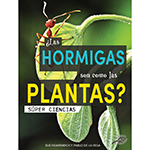
|
Ants have legs and scurry about. Plants have roots and are stuck in one place. Ants breathe oxygen; plants breathe carbon dioxide. Ants and plants are different, but they have similar needs. In Super Science: Are Ants Like Plants?, readers will find out how these living things get food, grow up, and talk to their friends. The Super Science series presents standards-supporting concepts in relatable, often-humorous ways to engage young readers and provide teachers with fun informational texts to support science curriculums. Maximum information is delivered with minimal text to engage and support early readers. - Photo- and fact-filled text for young readers supports NGSS standards
- Includes glossary, index, and comprehension questions
- Activity helps reader further engage with book content
NON-RETURNABLE: This item is non-returnable
|
Log in for Price
CD9781731654762
|
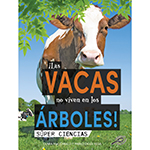
|
You wouldn't look for a cow in a tree, or a shark in a forest! Animals live in specific habitats that have the things they need to survive. Different animals eat different kinds of food. They like different weather and fear different predators. In Super Science: Cows Don't Live in Trees!, readers will discover some of the many reasons why animals live where they do! The Super Science series presents standards-supporting concepts in relatable, often-humorous ways to engage young readers and provide teachers with fun informational texts to support science curriculums. Maximum information is delivered with minimal text to engage and support early readers. - Photo- and fact-filled text for young readers supports NGSS standards
- Includes glossary, index, and comprehension questions
- Activity helps reader further engage with book content
NON-RETURNABLE: This item is non-returnable
|
Log in for Price
CD9781731654755
|
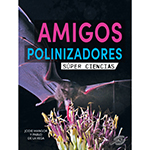
|
Meet the pollinators! These interesting insects, birds, mammals, and lizards all have a very important job. They help plants reproduce. In Super Science: Pollination Pals, readers will find out who pollinates what, and how. We can thank this very important group for many of the things we eat: apples, almonds, chocolate, and so much more! The Super Science series presents standards-supporting concepts in relatable, often-humorous ways to engage young readers and provide teachers with fun informational texts to support science curriculums. Maximum information is delivered with minimal text to engage and support early readers. - Photo- and fact-filled text for young readers supports NGSS standards
- Includes glossary, index, and comprehension questions
- Activity helps reader further engage with book content
NON-RETURNABLE: This item is non-returnable
|
Log in for Price
CD9781731654748
|
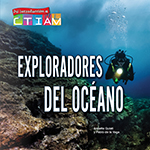
|
Oceans cover more than half of our planet. But what's under all that water? Starting with STEAM: Ocean Explorers introduces young readers to the ways in which science, technology, engineering, art, and math help us learn more about the oceans and their inhabitants. The Starting with STEAM collection introduces young readers to a variety of STEAM (science, technology, engineering, art, and math) topics using kid-friendly language and examples. Books include simple activities for home or classroom that support the reader's understanding of the main topic. - Explores NGSS standards topics through the lens of STEAM (science, technology, engineering, art, math)
- Activity helps reader further engage with book content
- Includes glossary, index, and comprehension questions
NON-RETURNABLE: This item is non-returnable
|
Log in for Price
CD9781731654700
|
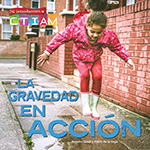
|
Kick a ball. Drop a cup. Jump in the air. What happens? Starting with STEAM: Gravity in Action introduces young readers to the ways in which science, technology, engineering, art, and math help us understand motion and gravity. The Starting with STEAM collection introduces young readers to a variety of STEAM (science, technology, engineering, art, and math) topics using kid-friendly language and examples. Books include simple activities for home or classroom that support the reader's understanding of the main topic. - Explores NGSS standards topics through the lens of STEAM (science, technology, engineering, art, math)
- Activity helps reader further engage with book content
- Includes glossary, index, and comprehension questions
NON-RETURNABLE: This item is non-returnable
|
Log in for Price
CD9781731654717
|
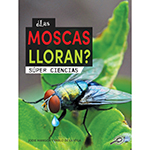
|
Life is not easy for baby animals in the wild. They have to learn how to find food, stay safe, and avoid being eaten. In Super Science: Does a Fly Cry?, readers will discover some of the interesting behaviors baby animals and their parents engage in to help ensure their survival. The Super Science series presents standards-supporting concepts in relatable, often-humorous ways to engage young readers and provide teachers with fun informational texts to support science curriculums. Maximum information is delivered with minimal text to engage and support early readers. - Photo- and fact-filled text for young readers supports NGSS standards
- Includes glossary, index, and comprehension questions
- Activity helps reader further engage with book content
NON-RETURNABLE: This item is non-returnable
|
Log in for Price
CD9781731654731
|
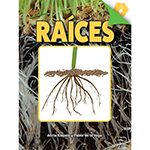
|
Plant roots are amazing! From keeping plants anchored in the ground to sucking up water from the soil, roots are an essential part of plants. Some go deep below Earth's surface while others spread far and wide just below the dirt. Dig in to discover how roots help plants survive. - Students can dig in to discover how roots help plants survive
- Roots are an essential part of plants, from keeping plants anchored in the ground to sucking up water from the soil
- Some go deep below Earth's surface while others spread far and wide just below the dirt
NON-RETURNABLE: This item is non-returnable
|
Log in for Price
CD9781731654984
|
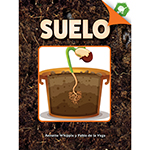
|
Soil hides most of the time, but it's important. Dig into the layers of soil and learn how it is made. Find out how soil helps plants and other living things thrive. Are you ready to get your hands dirty? - This Spanish science book features a photo glossary, index, and a post-reading activity to develop reading comprehension skills.
- 24 pages with vibrant photographs
- Guided reading level O
- Rourke proudly publishes respectful and relevant non-fiction and fiction titles that represent our diverse readers, and are designed to support reading on a level that has no limits!
NON-RETURNABLE: This item is non-returnable
|
Log in for Price
CD9781731654991
|
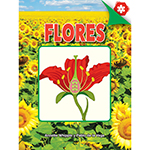
|
Flowers are more than just decoration. They have an important job. But they can't always do it alone. Find out more about the work of flowers, how they attract help, and how they help plant species survive. - This Spanish science book features a photo glossary, index, and a post-reading activity to develop reading comprehension skills.
- 24 pages with vibrant photographs
- Guided reading level N
- Rourke proudly publishes respectful and relevant non-fiction and fiction titles that represent our diverse readers, and are designed to support reading on a level that has no limits!
NON-RETURNABLE: This item is non-returnable
|
Log in for Price
CD9781731654960
|
|





